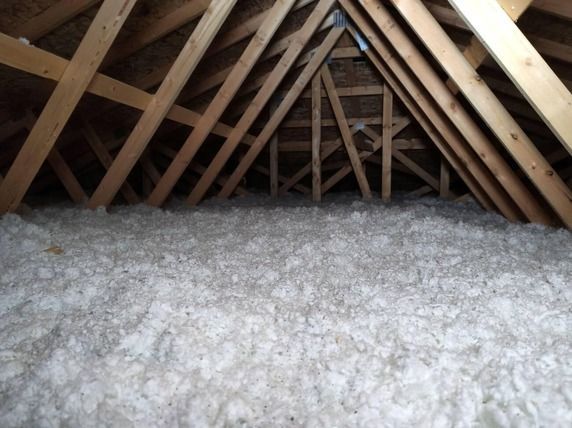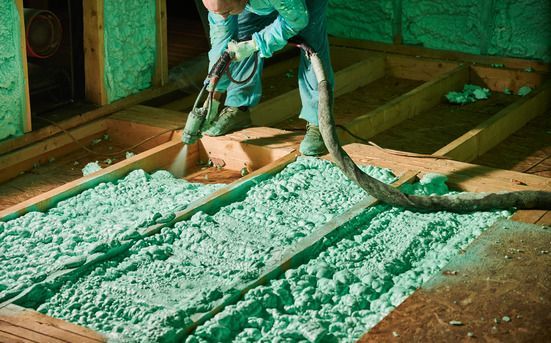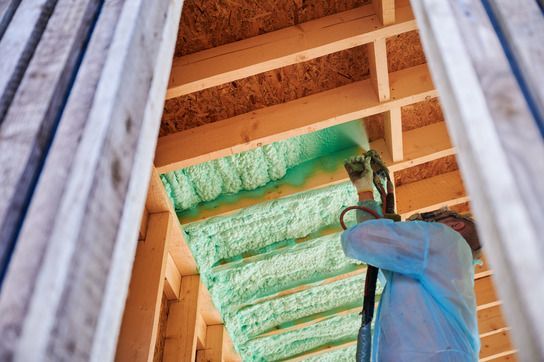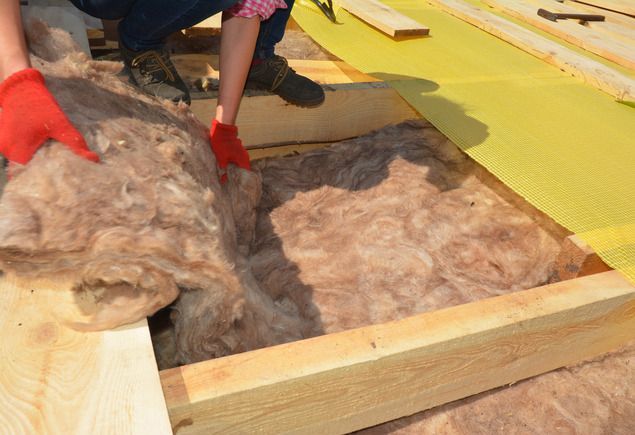Rodents in Your Attic? How Insulation Can Attract or Deter Pests
How Insulation Affects Rodent Attraction and Deterrence

Rodents in your attic can lead to serious issues for your home, from health hazards to costly damage. Certain types of insulation can either attract these pests or deter them, so understanding this relationship is crucial. Knowing how insulation condition affects rodent behavior will empower you to make informed decisions regarding pest control and property maintenance.
When considering attic insulation, it’s important to realize that outdated or damaged materials may serve as comfortable nesting spots for rodents. A clean, well-maintained insulation not only provides energy efficiency but also helps to keep pests at bay. By taking the right preventive measures, you can protect your home from these unwanted intruders.
If you're facing rodent issues or want to ensure your attic is safe, Attic Squad Insulation Services can be your trusted partner in addressing these concerns. Professional insulation installation can transform your attic into a secure space that deters pests, ensuring a healthier environment for you and your family.
Key Takeaways
- Insulation type and condition can influence rodent attraction.
- Proper maintenance of attic insulation can prevent infestations.
- Professional insulation services can help enhance your home’s pest deterrence.
Understanding Attic Insulation and Rodent Attraction
Your attic insulation plays a crucial role in the overall environment of your home. It can impact both energy efficiency and pest activity. This section explores how insulation serves as both a potential attractant and a deterrent for rodents.
The Role of Insulation in Your Attic
Insulation acts as a barrier that helps maintain temperature. It keeps your home warm in winter and cool in summer. The materials used can vary, from fiberglass to foam, each with distinct properties.
Proper insulation also reduces energy costs. A well-insulated attic can decrease heat loss, making your home more comfortable. However, insulation can create a cozy habitat for pests if not managed correctly. Rodents may find shelter and warmth, especially if insulation is damaged or displaced.
Why Rodents Are Attracted to Insulated Attics
Rodents seek warm, dark, and secure spaces, traits that often characterize insulated attics. The materials used in insulation, such as cellulose or fiberglass, may seem inviting as nesting materials.
Moreover, improper sealing can create access points for rodents. Gaps around vents, ducts, and other openings can lead directly to your insulation. Once inside, rodents can cause damage and contamination, leading to further issues within your home. Maintaining and inspecting your insulation regularly is essential to deter these pests and protect your living space.
Common Types of Insulation Used in Attics
Choosing the right insulation is crucial for maintaining your home's comfort and energy efficiency. Various insulation types have unique properties that can impact pest activity and overall performance.
Fiberglass Insulation
Fiberglass insulation is composed of tiny glass fibers and is one of the most commonly used materials in attics. It comes in the form of batts or rolls, making it easy to install in various attic spaces.
- R-Value: It typically offers a high R-value, meaning it is effective at resisting heat flow.
- Pest Resistance: While fiberglass itself is not attractive to rodents, if it becomes poorly installed or damaged, it may create spaces for pests to enter.
- Moisture Control: Ensure proper vapor barriers are in place to prevent moisture buildup, which can foster pest problems.
Consider storing or properly sealing any items in your attic to further deter pests from nesting.
Cellulose Insulation
Cellulose insulation is made from recycled paper products and treated with fire-retardant chemicals. It is often installed as loose fill, allowing it to fill gaps and crevices effectively.
- R-Value: Its R-value is comparable to fiberglass, providing excellent thermal performance.
- Pest Issues: Though cellulose can be an attractant for pests if not treated appropriately, many products include pest-repellent additives that minimize this risk.
- Eco-Friendly: Cellulose is sustainable, making it an environmentally friendly choice for insulation.
Proper installation is essential; ensure that it’s compacted enough to minimize space for pest habitation.
Spray Foam Insulation
Spray foam insulation is a versatile option that expands upon application, sealing gaps and providing a high R-value. It is applied as a liquid that hardens into a solid foam.
- Air Barrier: It creates an effective air barrier, improving energy efficiency.
- Pest Deterrent: The solid surface makes it difficult for rodents and insects to penetrate.
- Installation: Professional installation is recommended, as it requires specific equipment and expertise for proper application.
Keep in mind the potential for off-gassing; always ensure adequate ventilation during and after installation.
How Insulation Condition Can Lead to Rodent Infestations
Your attic insulation plays a crucial role in either attracting or deterring rodents. The condition of this insulation can significantly influence the likelihood of an infestation, as well as the extent of damage caused by these pests.
Signs of Rodent Presence in Insulation
Identifying the signs of rodent presence early can save you significant trouble. Look for the following indicators:
- Chewed Insulation: Rodents often chew through insulation materials to create nests or access food sources.
- Droppings: Small, dark droppings scattered around the insulation indicate active rodent activity.
- Nesting Materials: Shredded insulation, paper, or fabric can be a clear sign that rodents are nesting.
- Unusual Noises: Scratching or scurrying sounds in the attic usually suggest rodents are present.
Regular inspections can help you catch these signs early, preventing infestations from worsening.
Damages Caused by Rodents in Attics
Rodents can cause extensive damage to both insulation and the structural integrity of your home. Their chewing can compromise insulation effectiveness, leading to increased energy costs.
- Contamination: Rodent urine and feces can contaminate insulation, making it unsafe and unhealthy for your living environment.
- Electrical Hazards: Chewed electrical wires pose significant fire risks and can lead to costly repairs.
- Structural Damage: Persistent gnawing can weaken beams or other structural components in your attic.
Addressing rodent issues promptly can mitigate these risks and protect your home from further damage. Regular maintenance of your insulation and attic space is essential for prevention.
Preventive Measures for Rodent Control
To effectively keep rodents out of your attic, it's essential to implement preventive measures. Start by sealing any gaps or holes in your home's exterior. Rodents can squeeze through surprisingly small spaces.
Key Areas to Inspect:
- Eaves and Overhangs: Check for gaps where roof meets the walls.
- Foundation Cracks: Seal any cracks that could provide entry points.
- Vents: Install rodent screens to cover openings.
Next, focus on maintaining your attic insulation. Insulation can attract pests if it is soiled or damaged. Regularly inspect it for any signs of contamination or droppings.
Keep Your Attic Clean:
- Remove debris, old boxes, and stored items that could serve as nests.
- Use airtight bins for storage to minimize attractants.
You may also consider using rodent-proof insulation materials. Products designed to deter pests can be an effective barrier against infestations.
Finally, incorporate pest control strategies regularly. If you notice signs of rodents, acting quickly can prevent larger infestations. Professional services are available to address existing problems effectively.
By following these preventive measures, you create an unwelcoming environment for rodents in your attic.
Attic Squad Insulation Services: Your Partner in Pest Deterrence
Maintaining a pest-free attic is crucial for home comfort and safety. Attic Squad Insulation Services understands the role that insulation plays in attracting or deterring rodents. You can benefit from expert assistance tailored to keep your attic secure from these unwanted guests.
Professional Insulation Services Offered
At Attic Squad, you can access a range of professional insulation services designed to enhance your home’s energy efficiency while minimizing pest risks. Insulation removal allows for thorough cleaning and prepares your space for new materials. The installation of high-quality insulation helps prevent rodents from nesting, as certain types of insulation resist odors and nesting habits.
You can also choose air sealing services that close up entry points rodents might exploit. By ensuring your attic is well insulated and air-sealed, you significantly reduce the chances of infestations. Each service is performed with attention to detail, ensuring your home stays comfortable and pest-free.
Our Approach to Rodent-Resistant Insulation
Your safety and comfort guide our selection of insulation materials. Attic Squad uses products designed to make your attic less appealing to pests. One effective option is fiberglass insulation, which is less attractive for rodents compared to other types.
We also emphasize the importance of proper installation. Gaps or improperly installed insulation can provide easy access for pests. Our team is trained to ensure thorough coverage, blocking pathways that might allow rodents to enter.
Using moisture-resistant materials further deters pests, as damp environments attract them. By combining quality materials with expert installation, you can trust that your insulation will contribute to a rodent-resistant attic environment.
The Process of Professional Attic Insulation Installation
A well-executed insulation installation process is crucial for maximizing energy efficiency and preventing pest infestations. This section outlines the key steps involved in professional attic insulation installation, ensuring your home remains comfortable and secure.
Inspection and Assessment of Your Attic
The first step involves a thorough inspection of your attic. A professional will evaluate your current insulation, identifying any gaps or areas needing improvement. They will also check for signs of moisture, air leaks, and pest issues.
During the assessment, you’ll receive information on the condition of your existing insulation. Any damaged or outdated materials may need removal. This process is vital in determining how much new insulation is required and what type will work best for your attic's specific environment.
Selecting the Right Insulation
Choosing the right type of insulation is critical. Factors include climate, energy efficiency goals, and potential for pest attraction. Common insulation materials include fiberglass, cellulose, and spray foam.
Fiberglass is popular for its resistance to pests, while cellulose is eco-friendly but can attract rodents if not protected properly. Spray foam offers an excellent air seal but typically comes at a higher cost. Your insulation contractor will guide you in selecting the most suitable option tailored to your needs.
Ensuring Proper Installation for Maximum Defense
Correct installation is essential for effective insulation properties. Professionals focus on achieving proper thickness and coverage to prevent air leaks that could lead to energy loss.
They ensure that insulation is installed evenly without gaps. Techniques such as sealing edges and joints further protect against pests, eliminating potential entry points. Additionally, professionals may recommend installing a vapor barrier to reduce moisture issues, which can deter rodents.
By following these steps, you can significantly enhance the performance of your attic insulation while minimizing pest risks.
Maintaining Your Attic Insulation
Proper maintenance of your attic insulation is essential for ensuring its effectiveness and longevity. Regular inspections and knowing when to replace insulation can help prevent issues like rodent infestations and energy loss.
Regular Checkups and Upkeep
Conducting regular checkups of your attic insulation should be part of your home maintenance routine. Aim to perform inspections at least twice a year, preferably in the spring and fall.
During these checkups, look for signs of moisture, mold, or pest activity. Any of these issues can compromise your insulation's performance. Check for gaps or compressed areas in the insulation, as this can indicate settling or damage.
Consider maintaining a clean attic environment. Remove debris, which can attract pests, and ensure proper ventilation to minimize humidity. This will not only help in preserving your insulation but also deter rodents from making your attic their home.
When to Consider Replacement
Over time, insulation may lose its effectiveness, necessitating replacement. If you notice significant wear, such as dampness or mildew, it's time to take action.
Another indicator for replacement is the presence of pests. If rodents have invaded your attic, they can damage insulation materials, leading to reduced energy efficiency.
Additionally, if your energy bills are rising consistently, it may signal that your insulation needs to be refreshed. Upgrading to newer insulation materials can enhance energy savings and pest resistance.
Keep an eye on the age of your insulation as well. Most types last between 10 to 20 years. If you're nearing the end of that lifespan, consider scheduling an inspection for potential replacement.
Costs and Benefits of Quality Attic Insulation
Investing in quality attic insulation offers several benefits that can enhance your home's comfort and efficiency.
Benefits Include:
- Energy Savings: Quality insulation reduces heat transfer, which helps maintain stable indoor temperatures. This can lead to lower utility bills.
- Increased Comfort: Proper insulation keeps your home warmer in winter and cooler in summer, improving your overall living experience.
- Reduced Noise: Insulation can also provide soundproofing, making your home quieter and more peaceful.
- Pest Deterrent: While insulation can attract pests if not maintained, using materials with pest-resistant properties can help keep rodents and insects at bay.
Costs to Consider:
- Initial Investment: Quality insulation may require a higher upfront cost, but the long-term savings on energy bills often outweigh these expenses.
- Installation Fees: Hiring professionals for installation ensures proper application but adds to your overall expense.
- Maintenance Costs: Keeping insulation in good condition is vital. If it is damaged or compromised, repairs may incur additional costs.
Balancing these costs and benefits is essential for making an informed decision. Quality attic insulation can be a valuable addition to your home, contributing to energy efficiency and comfort.
Contact Attic Squad Insulation Services
If you suspect rodents in your attic, reaching out to professionals is essential. Attic Squad Insulation Services offers expertise in pest-related insulation issues.
Call us today to schedule a free consultation. You can reach us at (626) 649-3652.
Our team will assess your insulation and identify any potential problems. We understand how insulation quality impacts pest attraction.
You can also visit our website for more information on our services: Attic Squad Insulation Services.
In addition to insulation installation, we provide insulation removal and radiant barrier installation. These services can help create a less inviting environment for pests.
Maintaining a rodent-free attic is not just about insulation. It’s also vital to seal gaps and ensure proper ventilation.
Don’t let pests compromise your home’s comfort and safety. Contact Attic Squad Insulation Services today for a solution tailored to your needs. Your home's insulation is a crucial factor in keeping pests away.
You might also like
Book a Service Today
We will get back to you as soon as possible
Please try again later
Quick & Reliable
Don’t wait to improve your home’s energy efficiency and comfort. Contact Attic Squad today to schedule your free consultation and take the first step towards a more comfortable, energy-efficient home.
All Rights Reserved | Attic Squad



